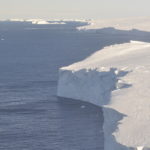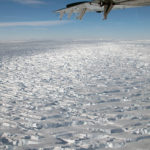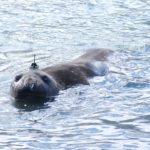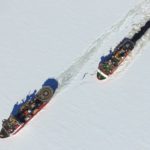GHC (“Geological History Constraints”) will gather information about past ice sheet behaviour and relative sea level change in the Thwaites Glacier system. Determining the timing and magniture of past episodes of thinning and retreat and subsequent re-advance is important to provide a context for the current and future behaviour of Thwaites Glacier.
Geological evidence for past retreat of the ice sheet’s grounding line will be obtained by drilling through ice into the underlying bedrock to collect rock cores. This will take advantage of the US “Winkie” drill, which has been successfully used in the past two Antarctic field seasons by NSF-funded researchers to collect subglacial bedrock samples. Surface exposure dating (see ANiSEED project explanation of exposure dating) of the rock samples will be used to determine the timing and duration of past episodes of grounding line migration (both retreat and re-advance). The project differs from most other published studies of Antarctic deglacial history because it is concerned with finding evidence for times in the past when the ice sheet was thinner, rather than thicker, than present.
The project will also reconstruct relative sea-level changes in the region, over the past 10,000 years, by mapping raised beaches and dating organic material (e.g. penguin bones) from islands in Pine Island Bay. At present, we have effectively zero knowledge from the entire Amundsen Sea region of how relative sea level has changed since the last glacial period, approximately 20,000 years ago, to the present-day. This work will therefore provide an understanding of the significance of contemporary glacier changes and will provide data that are urgently needed to increase the reliability of physical models that predict future sea level change.
Combining the two components of this project will allow researchers to gain a more comprehensive understanding of the conditions under which the Thwaites and Pine Island Glacier grounding lines have retreated and re-advanced in the past. This is important for validating models and establishing whether present retreat of the Thwaites glacier system is likely to be reversible.
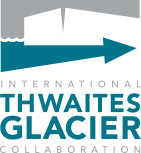
This project aims to investigate whether and when the Thwaites glacier system was less extensive than at present.
To achieve this the following objectives will be addressed
- To produce a record of ice thickness change using surface exposure dating of rock samples. Bedrock samples from under the glacier will be obtained by using the US-developed “Winkie” drill.
- To produce a chronological record of relative sea-level change in Pine Island Bay during the last 10,000 years. This will be achieved by mapping raised marine deposits on islands and dating them using radiocarbon in fossil organic material.
13 November, 2023
Antarctica Live Lessons, a new and exciting learning resource, launches today (13 November). Aimed at engaging and inspiring the imaginations of young learners, the platform introduces an array of live, …
31 May, 2023
The ground beneath Antarctica’s most vulnerable glacier has been mapped for the first time, helping scientists to better understand how it is being affected by climate change. Analysis of the …
13 December, 2022
Nearly 60 scientists and support staff are on their way to Thwaites Glacier in West Antarctica. It’s part of an ambitious international effort to understand the glacier and surrounding ocean …
28 January, 2020
Teams from the US and UK have successfully completed scientific fieldwork in one of the most remote and hostile areas of West Antarctica – coinciding with the 200th anniversary of …
14 November, 2019
Nearly 100 scientists and support staff depart this week (13 November 2019) for the most ambitious mission to date for Thwaites Glacier in West Antarctica. In the second year of …
29 January, 2019
Scientists will use two species of seals to investigate a huge glacier in West Antarctica that is at risk of collapse. A team of over 20 polar scientists from the …
14 January, 2019
The British Antractic Survey’s vessel RRS Ernest Shackleton teamed up with the Royal Navy survey ship HMS Protector to help scientists begin a five-year mission to understand how West Antarctica …
19 November, 2018
A team of UK and U.S. polar scientists are about to embark on one of the largest joint Antarctic missions for more than 70 years. It’s the first field season …
The Twin Otter is a high-wing, twin-engine, turbo-prop aircraft. They are used all over the world and are known for their rugged construction, reliability and short take-off and landing performance. …




